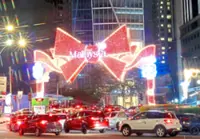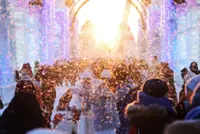Light is emitted from the Chicago skyline as seen from Lake View Beach, Indiana, the United States. Photos: TNS
Some of Drew Carhart’s earliest memories remind him of his love of nature. Not just trees, flowers or birds – but the stars, planets and galaxies visible in the night sky.
Fifty years ago, Carhart helped form the Naperville Astronomical Association, which now has two observatories, hosts regular “star parties” and teaches the community about astronomy and observing techniques.
Already a subscriber? Log in
Save 30% OFF The Star Digital Access
Cancel anytime. Ad-free. Unlimited access with perks.





